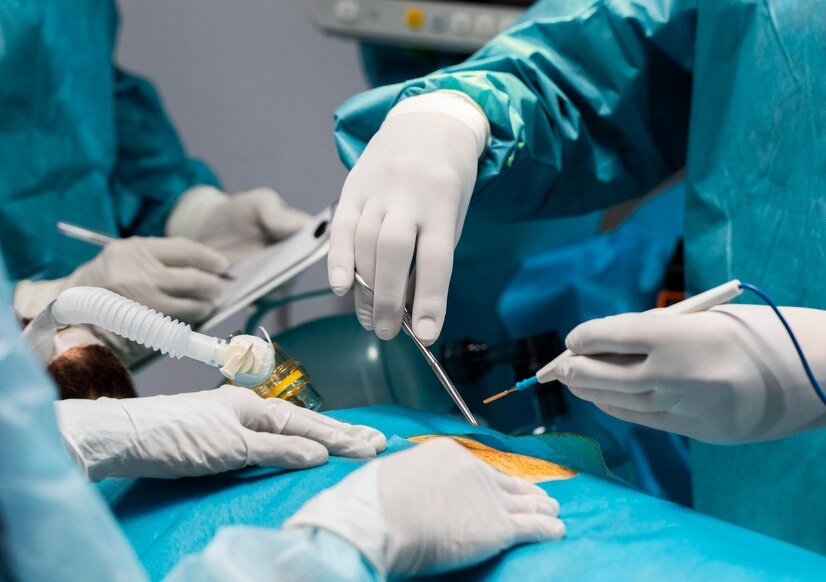In recent years, minimally invasive gynecology has witnessed a remarkable transformation, thanks to continuous advancements in medical devices and surgical techniques. One of the most significant areas of innovation lies in morcellation tools—devices used to fragment large tissues (such as uterine fibroids or the uterus itself) into smaller pieces so they can be removed through small laparoscopic incisions. As concerns over safety and efficiency have grown, modern technology has paved the way for safer, more effective, and surgeon-friendly morcellation solutions.
What Is Morcellation and Why It Matters
Morcellation is a critical technique in laparoscopic surgeries like hysterectomy and myomectomy, where large tissue removal through a small incision would otherwise be impossible. The traditional open approach to gynecological surgery often resulted in longer recovery times, increased hospital stays, and greater risk of infection. In contrast, laparoscopic morcellation, when done safely, allows patients to return to their daily lives more quickly and with fewer complications.
However, after concerns emerged about the spread of undiagnosed cancerous tissues through uncontained power morcellation, the medical community began pushing for safer alternatives, leading to a wave of innovation driven by modern technology.
The Shift Toward Contained Morcellation Systems
One of the most notable breakthroughs in recent years has been the introduction of contained morcellation systems. These devices are designed to prevent the dissemination of tissue fragments and potential cancer cells within the abdominal cavity. By using a tissue containment bag, surgeons can safely morcellate tissues within a sealed environment, drastically reducing the risk of spreading unsuspected malignancies such as leiomyosarcoma.
Companies across the globe, including innovative medical device manufacturers in India, are developing robust and user-friendly specimen retrieval bags and morcellation containment systems to align with global safety standards. These modern solutions not only enhance surgical safety but also restore confidence in laparoscopic approaches among both surgeons and patients.
Modern Technology Redefining Device Design
- The integration of modern technology has led to impressive upgrades in the design and functionality of morcellation devices:
- Improved blade systems now allow for precise and controlled cutting, reducing tissue trauma and improving fragment consistency.
- Smart feedback mechanisms are being explored, allowing the device to adjust speed or blade motion based on tissue resistance.
- Disposable morcellators offer single-use functionality that eliminates sterilization concerns and minimizes cross-contamination.
- Ergonomically designed devices with intuitive controls are improving surgeon comfort and reducing fatigue during longer procedures.
All these enhancements are the result of intensive research, collaboration with surgical experts, and a strong emphasis on human-centered design—ensuring that both patient safety and surgeon usability are prioritized.
Role of Imaging and Visualization Technologies
Modern morcellation tools are increasingly being designed to integrate with advanced laparoscopic imaging systems. Enhanced visualization allows surgeons to operate with greater accuracy and avoid unintended injuries to surrounding tissues. Some systems even feature real-time monitoring or integrated scopes that assist in navigating the containment bag or viewing tissue fragmentation as it occurs.
The future may see the inclusion of augmented reality (AR) or AI-assisted decision-making in morcellation procedures, offering a futuristic but plausible step forward in gynecologic surgery.
Focus on Safety and Regulatory Compliance
After the FDA issued warnings against uncontained power morcellation, the industry responded quickly with innovations centered on compliance and patient safety. Many modern devices are now developed in strict accordance with updated regulatory guidelines. Features like pressure-tested containment bags, leak-proof seals, and simplified deployment systems are becoming standard.
Moreover, medical training and simulation tools are also evolving, giving surgeons better access to real-world practice scenarios using these advanced devices. Training with modern laparoscopic simulators ensures surgeons are confident and skilled in using the latest inbag morcellation technologies effectively.
Looking Ahead: The Future of Morcellation
The journey of innovation in morcellation tools is far from over. As minimally invasive gynecology continues to grow, the demand for safer, smarter, and more efficient tools will only increase. The industry is exploring:
- Robotics-assisted morcellation for superior control
- AI integration for tissue differentiation
- Eco-friendly materials in disposable tools
- Miniaturized devices for even less invasive procedures
These innovations promise to not only reduce surgical risks but also expand the range of procedures that can be performed laparoscopically, offering more women the benefits of minimally invasive surgery.
Conclusion
The fusion of modern technology with minimally invasive gynecology is reshaping the future of women’s healthcare. Innovations in morcellation tools—from safer containment systems to smarter cutting mechanisms—are enhancing surgical outcomes, improving safety, and empowering gynecologic surgeons to deliver better care. As technology evolves, so will the possibilities for safer, quicker, and more effective gynecological procedures, ultimately making a meaningful difference in the lives of patients around the world.



